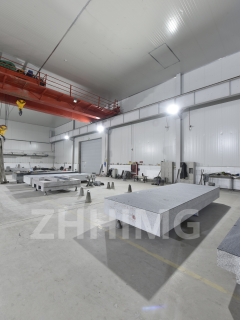Precision Ceramics and Granite: Material Advantages and Applications
In the realm of advanced materials, precision ceramics and granite stand out for their unique properties and diverse applications. Both materials offer distinct advantages that make them suitable for various industries, from aerospace to electronics.
Material Advantages
Precision ceramics are known for their exceptional hardness, thermal stability, and resistance to wear and corrosion. These characteristics make them ideal for high-performance applications where durability is paramount. Ceramics can withstand extreme temperatures and harsh environments, making them suitable for components in engines, cutting tools, and medical devices.
On the other hand, granite is celebrated for its natural strength and aesthetic appeal. Composed primarily of quartz, feldspar, and mica, granite is not only durable but also resistant to scratching and staining. Its ability to maintain structural integrity under heavy loads makes it a preferred choice for countertops, flooring, and architectural elements. Additionally, granite's natural beauty adds a touch of elegance to any space, making it popular in both residential and commercial settings.
Applications
The applications of precision ceramics are vast. In the electronics industry, they are used in insulators, capacitors, and substrates for circuit boards. Their ability to withstand high temperatures and electrical stress makes them indispensable in modern technology. In the medical field, precision ceramics are utilized in implants and prosthetics due to their biocompatibility and strength.
Granite, with its robust nature, finds extensive use in construction and design. It is commonly used for countertops, tiles, and monuments, providing both functionality and aesthetic value. Additionally, granite's thermal properties make it suitable for outdoor applications, such as paving and landscaping.
In conclusion, both precision ceramics and granite offer unique material advantages that cater to a wide range of applications. Their durability, aesthetic appeal, and versatility make them invaluable in various industries, ensuring their continued relevance in the future of material science.
Post time: Oct-29-2024

